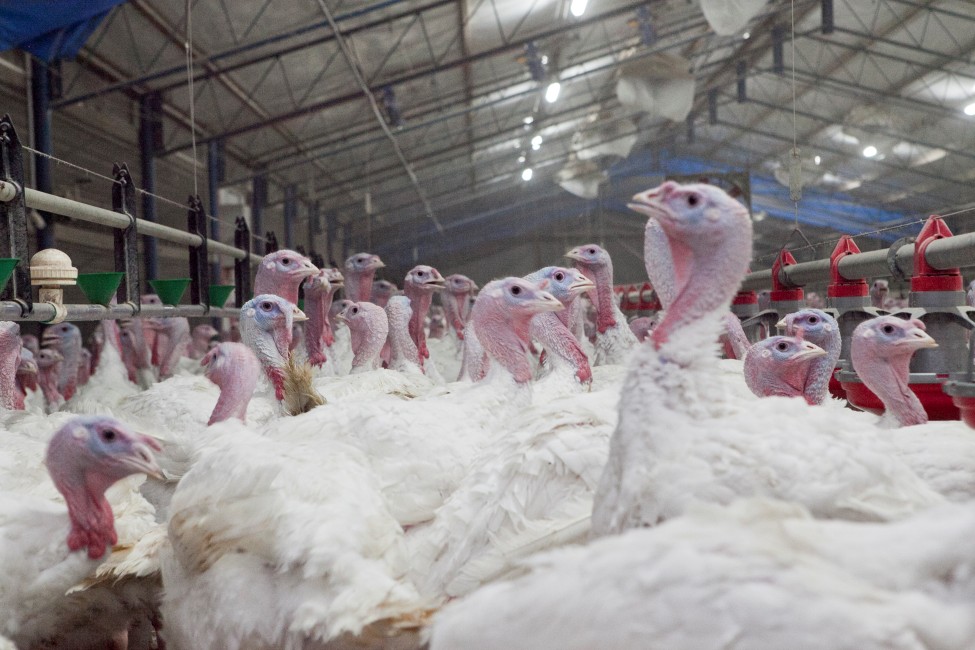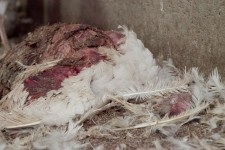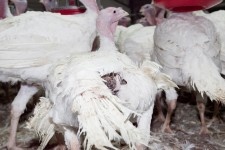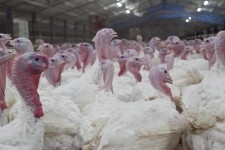- Overview
- Confinement
- Turkey poults
- Mutilation
- Artificial lighting
- Health Concerns
- Use of antibiotics
- Genetic alterations
- Muscle disorders
- Skeletal disorders
- Lame and injured birds
- Mortality rate
- Artificial insemination
- Health problems of breeders
- Slaughterhouse
- Turkeys: sentient and intelligent
- Conclusion
- References
Artificial Lighting
Factory-farmed turkeys never experience natural sunlight and darkness. They exist indoors under artificial lighting which is manipulated to distort their normal sleeping and feeding patterns, increase eating times, and control the 'productivity' of the birds. Such lighting programs affect growth rate, body weight, mortality and susceptibility to metabolic diseases and circulatory problems.(17)
Inspections by animal advocates across Australia have shown that as slaughter time (at about three months of age) approaches, the birds are exposed to fluorescent light for continuous periods. This exposure causes extreme stress, as the birds experience ongoing sleep deprivation. Alternatively, subdued lighting may be used to decrease aggression amongst the birds resulting from the ongoing stress of the crowded conditions they endure.(18) These lighting regimes raise serious health and welfare concerns by contributing to lameness, skin diseases and eye disorders.(19) (See Figure 6).
 Figure 6: A turkey factory farm in Australia: Birds raised under continuous fluorescent lighting regimes suffer sleep deprivation and ongoing stress because they are unable to rest.
Figure 6: A turkey factory farm in Australia: Birds raised under continuous fluorescent lighting regimes suffer sleep deprivation and ongoing stress because they are unable to rest.



